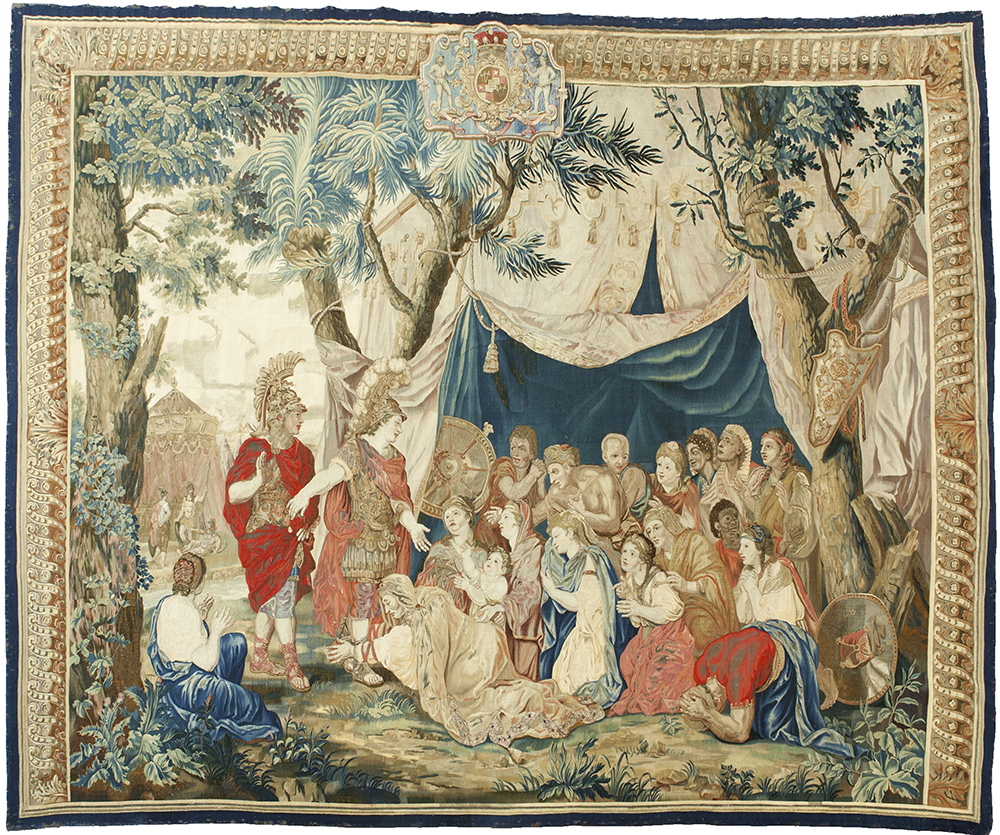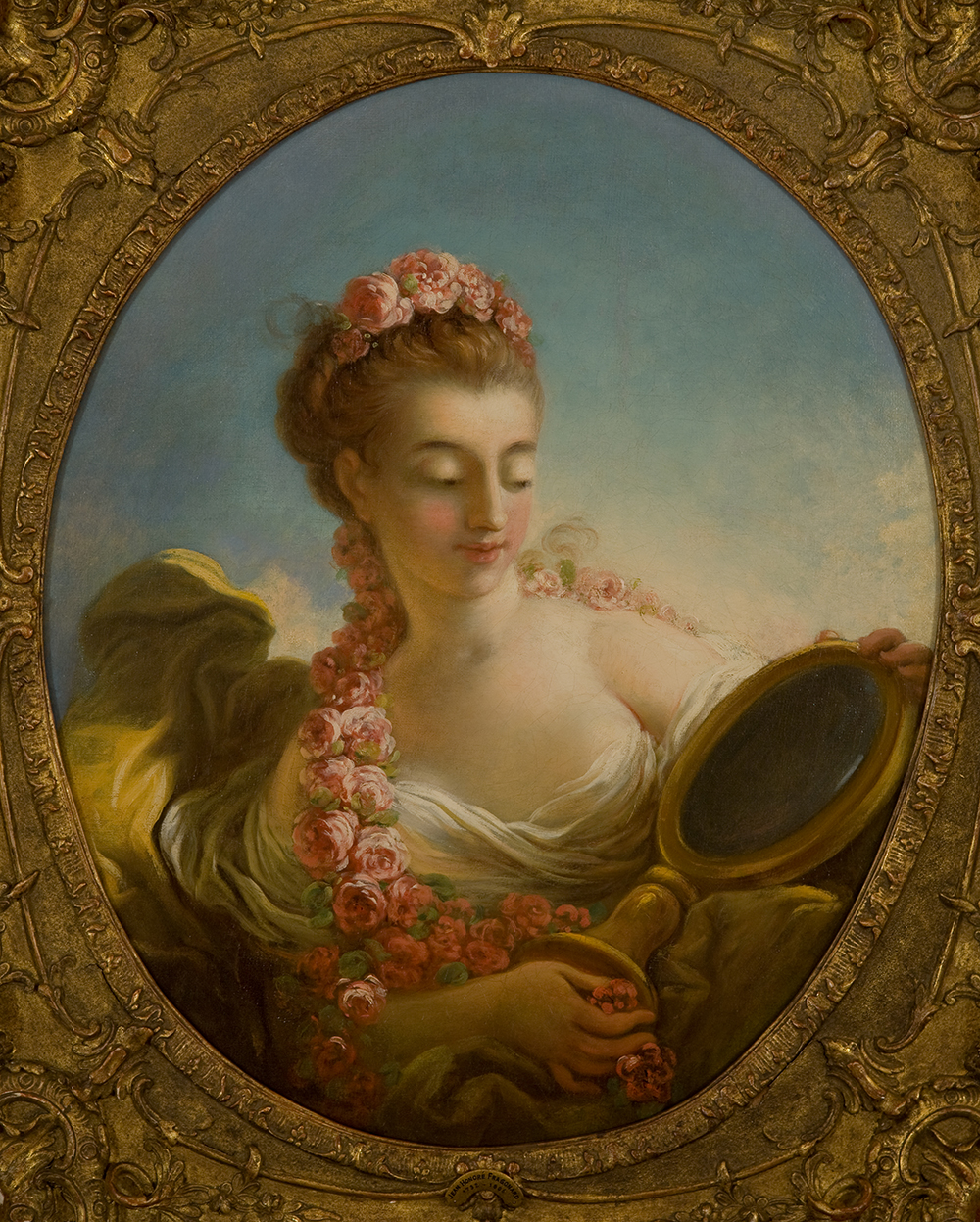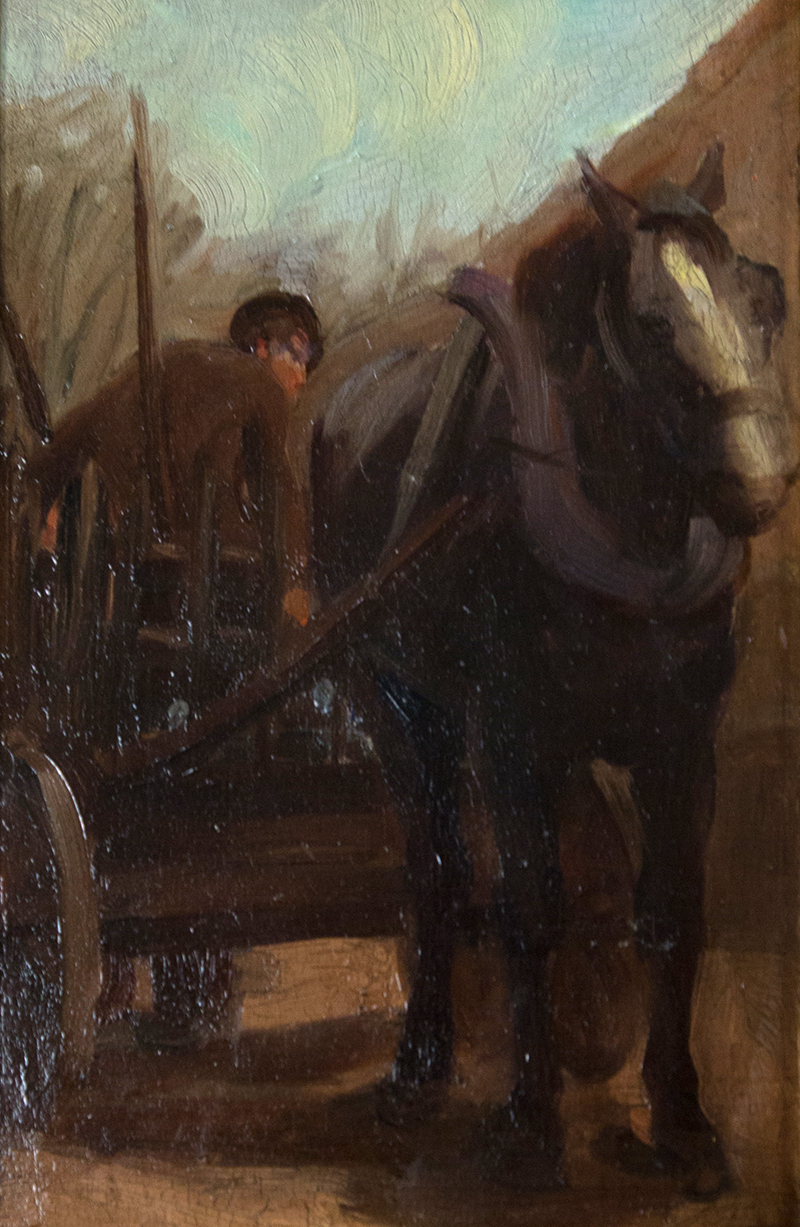
Veronica Montes, UMFA Art Ambassador
One of my favorite pastimes is wandering in art museums. I delight in seeing various thoughts, ideas, and feelings shown through art in one place. Looking at artworks often leads me to thinking about many things, like books. Reading is another one of my favorite pastimes. Here are some books that come to mind when I look at art in the Utah Museum of Fine Arts’ European art galleries.

Charles Le Brun, French, 1619–1690, Gobelins Tapestry Manufactory, French, established 1662, The Queens of Persia at the Feet of Alexander
the Great (The Tent of Darius), designed, ca.1667–1679, after oil painting completed 1661, silk and wool, Gift of Mrs. Richard A. Hudnut, UMFA1951.101
I enjoy seeing the tapestry of Charles Le Brun’s painting The Queens of Persia at the Feet of Alexander the Great (The Tent of Darius) (ca. 1664–1665) whenever I visit UMFA. Its magnificent size draws me in to observe the entire tapestry while simultaneously urging me to look at the finer details of the piece. The tapestry utilizes the rule of thirds, which is demonstrated by the three trees found in the foreground. The depiction of Alexander the Great shows a reference to the Greco-Roman period. These characteristics highlight the classical nature of Le Brun’s techniques. When I think of classicism in art, every so often I deliberate about the books that were produced during this movement. One of my personal favorites is The Princess of Clèves by Madame Lafayette. It focuses on the personal life of Madame de Clèves, particularly the unrequited love she has for Monsieur de Nemours. The book follows the classic outline of a tragedy and is regarded as the first book in France to use character analysis.

The grandeur of the court that Madame de Clèves participated in makes me recall a later art movement called rococo. The light pastel colors, curved lines, and ornate detail found in The Allegory of Prudence (ca. 1772) by Jean-Honoré Fragonard showcase the light-heartedness and opulence of rococo. While rococo is considered an art movement, I still think of books, like Candide by Voltaire, which was written around the same time. Voltaire wrote Candide as more of a speculative and satirical piece on the journey of life without that nevertheless confronts life’s struggles.

Honoré Daumier was a realist painter who also took interest in observing everyday life, especially of the working class. This is illustrated by his chosen subject and unadorned manner in his painting Horse and Buggy. The hunched shoulders of the person driving the horse and buggy suggests the long hours of the driver. Furthermore, the minimal background of the painting directs the viewer to focus on the horse and buggy. This painting reminds me of Flaubert, a French author who usually wrote about daily life as well. One of my favorite stories by Flaubert is “A Simple Heart,” which is about a servant girl named Félicité. Realism is found in Flaubert’s work through his concise and direct language as he describes the experiences of Félicité.
So, these are some books that I tend to think of when I am looking at certain works found at UMFA. I hope you enjoyed reading my contemplations and are intrigued to take a closer look at the pieces and books I’ve mentioned! If you would like more opportunities to make connections between visual art and literature, check out UMFA’s Literature in the Galleries resources and programs. Please share your favorite art-book combos in the comment section below!
Veronica Montes is an Art Ambassador at UMFA who likes to draw, read, and go on hikes. She enjoys hanging out with loved ones and exploring new places.
